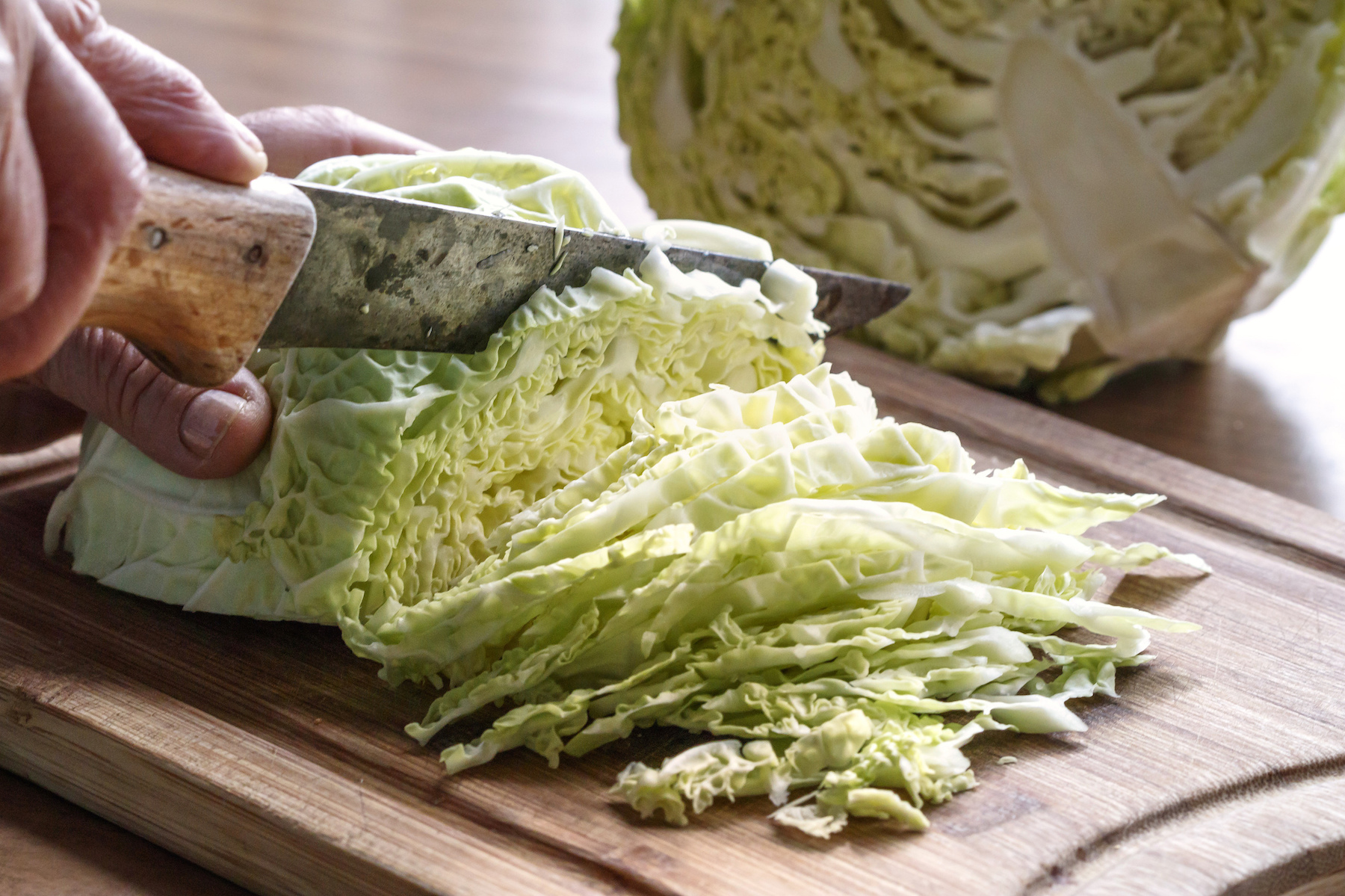Food for Thought: The Microbiome of Fermented Foods
Fermentation Without Representation
Fermentation is a naturally occurring process that has been used for culinary purposes, from brewing beer to leavening bread. Prior to the age of refrigeration, fermentation was primarily used for thousands of years as a means for preserving perishable foods.
A class of microbes associated with fermented food products are lactic acid bacteria (LAB). These bacteria are responsible for the distinct sour taste in foods such as unpasteurized yogurt, kimchi, and sauerkraut [1].
Korean and European renditions of fermented cabbage have been categorized as ‘superfoods’ due to high nutrient levels and the presence of probiotics which have positive impacts on the body’s gut microbiome.
Kimchi is a traditional Korean dish of fermented vegetables, that typically consists of Napa cabbage leaves prepared with other ingredients such as fish sauce, hot peppers, and garlic. Sauerkraut (German for sour cabbage), is a staple of many European cuisines and is made by fermenting shredded cabbage in a simple salt brine. Traditionally, both dishes require two to four weeks to ferment [2,3].

With recent health trends and the growing buzz around probiotics, fermented foods have surged in popularity. Because of their increased demand, new studies on fermented foods aim to shed light on the production process and provide solutions in order to expedite and make the process more efficient.
Enabling Accurate Profiling of Microbes
Sample collectionIn two separate studies, Zabat et al. [1,4] took samples of raw ingredients and fermented foods at different time points, and from the environment in which the kimchi and sauerkraut were manufactured.
As easy as sample collection seems, it is one of the most critical steps in assessing a sample’s microbiome. Previous studies on the microbiome of foods have relied heavily on culture plating techniques, which entails streaking samples on multiple agar plates with different growth media to identify microbes in a sample. Caveats with this method include reduced sensitivity to detect lower concentrations of microbes, inability to grow certain microbes in culture, and if not frozen or plated immediately, there can be misrepresentations in the microbial profile due to outgrowth or death of certain species.
To prevent such issues, Zabat et al. used DNA/RNA Shield collection tubes with swabs to enable an accurate ‘snapshot’ of the microbial communities in samples from the production facilities. To illustrate the protective nature of DNA/RNA Shield, figure 1 (Zymo Research) provides an example of the effect on the microbial profile of samples left at room temperature for one month while preserved in DNA/RNA Shield (left) versus those left unprotected (right).

The Verdict for Vegans & Food Production
KimchiVegetarian and vegan diets have been rising in popularity in North America over the past ~25 years. This has been reflected as the emergence of symbols (for example, “V”) placed on supermarket product labels, and on menu items at restaurants, indicating vegetarian or vegan foods. Additionally, the number of vegetarian and vegan restaurants in North America has risen from about 50 in 1993 to about 1000 in 2018. Plant-based food sales in the U.S. recently experienced 8.1% growth in one year [6].
However, not all foods are vegetarian/vegan-friendly. Kimchi is typically made with fish sauce that provides glutamic acid for a savory sensation when it is consumed. While adding to its renowned taste, the addition of fish sauce also prevents kimchi from being a vegetarian/vegan-friendly food. In Zabat’s kimchi study [1], they compared the production of kimchi using the traditional fish sauce to a vegetarian/vegan-friendly fermented miso paste. Interestingly, even though the fish sauce and miso paste had their own unique lactic acid bacteria associated with them, they did not influence the final microbiome of the fermented kimchi. This implies that the production of vegan-friendly kimchi results in an similar final product when prepared using the traditional ingredients.
Other interesting findings came from fermenting kimchi for a shorter time in warmer temperatures, which also mirrored the microbiome of traditional fermentation methods. This has implications for expediting the production process while maintaining the same qualities.
While starting ingredients did not display much lactic acid bacteria, there was a presence in the actual production facility itself, suggesting that the facility in which the kimchi is produced can act as a microbiome ‘starter’ culture.
SauerkrautThere are no conflicts in sauerkraut production when it comes to meeting the modern demand for vegetarians and vegans, as its preparation does not call for the use of any animal-based products. But, like kimchi, the question arises “does the preparation method and microbial community of sauerkraut impact the final product’s taste characteristics produced?”

In Zabat’s study on sauerkraut [4], they were able to confirm previous studies on the microbial profile of sauerkraut using 16S rRNA gene sequencing methods and found that fermenting at warmer and shorter time periods did not impact the microbial profile. Unlike kimchi, the facility in which it was produced did not have a significant amount of lactic acid bacteria present. These findings suggest that the production method of sauerkraut can be changed without having a significant impact on the final food’s taste and the make-up of its microbiome.
Studies like this, paired with Next-Gen Sequencing, provide better insight into the microbiome of fermented foods and their production. With research-backed solutions, we can change production methods to increase efficiency and appeal to a larger demographic by eliminating undesirable ingredients like animal products.
References:
1. Zabat, Michelle A., et al. "The impact of vegan production on the kimchi microbiome." Food microbiology 74 (2018): 171-178.
2. “Sauerkraut, Germany's Superfood.” Germanfoods.org,
3. “Sauerkraut v. Kimchi: A Tale of Two Cabbages.” Contemporary Food Lab
4. Zabat, Michelle A., et al. "Microbial Community Analysis of Sauerkraut Fermentation Reveals a Stable and Rapidly Established Community." Foods 7.5 (2018): 77.
5. Bundgaard-Nielsen, Caspar, Søren Hagstrøm, and Suzette Sørensen. "Interpersonal Variations in Gut Microbiota Profiles Supersedes the Effects of Differing Fecal Storage Conditions." Scientific reports 8.1 (2018): 17367.
6. “New Data: Sales Climbing for Plant-Based Foods” The Good Food Institute.


